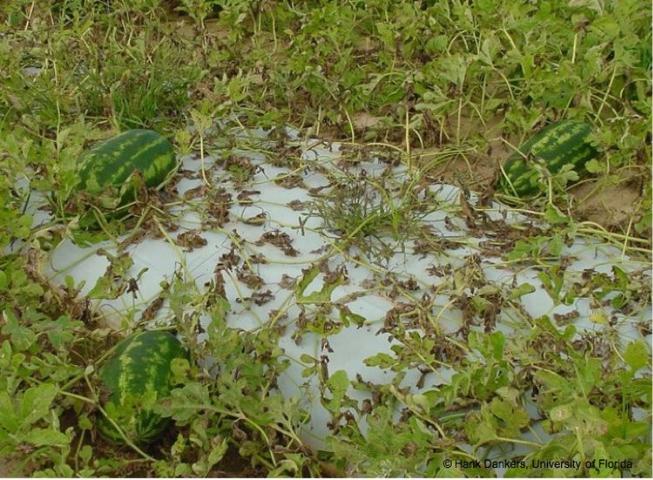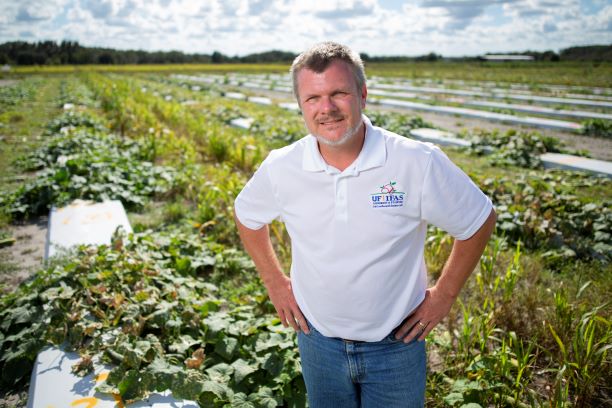By Clint Thompson
An incorrect diagnosis of a plant disease can be a costly error for a producer. In an era where input prices are just as high as they have ever been, a farmer can ill-afford to apply the wrong fungicide.

Gary Vallad, professor of plant pathology at the University of Florida Institute of Food and Agricultural Sciences (UF/IFAS) Gulf Coast Research and Education Center, discussed that during the Suwanee Valley Watermelon Institute meeting on Dec. 1.
“That’s why it’s important because you’ll have these very different pathogens that can cause very similar symptoms. Your action regarding which chemistry you’re going to apply will be very different,” Vallad said. “I’ve been out in the field and done the same where this looks like gummy stem blight and put my eye lens on it and be like, no, it’s downy mildew. That can be a very costly mistake with regards to what fungicide you apply.

“When we get some of these big, large lesions, typically they’re two different fungi, and the structures they produce on the leaf surface are very distinct and different. With a good hand lens and some experience, you can differentiate. If you don’t feel comfortable doing that, I would highly recommend bringing into the lab. Five seconds it would take a good lab person under a microscope, and they’ll be able to tell you which is which.”
Gummy stem blight and downy mildew are two of the more common diseases that impact watermelons every year. But they are different diseases and require specific fungicide applications.
“Typically, downy mildew doesn’t go after the stem where gummy stem blight does. I think the biggest problem is if you’ve got a lot of gummy stem blight already in your field and you get downy coming in, you might think that you just need to manage gummy. If downy is in there as well, you need to manage both of them,” Vallad said. “I think it’s important to make sure we get a good diagnosis about what’s really going on in your field.”









